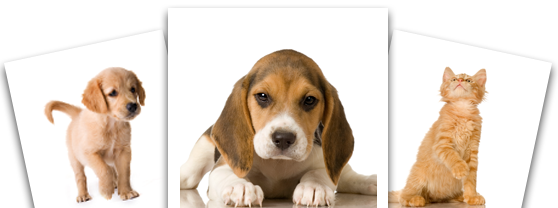|  |
|  |
(574)654-3129
www.newcarlislevet.com
|
SURGERY AND ANESTHESIA Extensive soft tissue and orthopedic surgeries are readily performed, ranging from spays, neuters, and declaws to cancer, intestinal, fracture, and torn cruciate surgeries. For the latter, we perform a version of a Tibial Tuberosity Advancement (TTA) for which you generally you would need to go to a specialist. We have had excellent results and often receive referrals from other veterinarians. It is significantly less expensive than a TPLO procedure that often gets referred to a specialist. Your pet will receive anesthetics tailored to him as an individual and will be monitored closely for complications both during and following the procedure. Laser surgery is commonly performed, which results in less pain, swelling, and bleeding leading to faster recoveries. Many people have questions about various aspects of their pet's surgery, and we hope this information will help. It also explains the decisions you will need to make before your pet's upcoming surgery.
Today's modern anesthetic agents have made surgery much safer than in the past. We safely anesthetize pets well into their teen years very commonly. Here at New Carlisle Animal Clinic, we do a thorough physical exam on your pet before administering anesthetics, to ensure that a fever or other illness won't be a problem. We also adjust the amount and type of anesthetic used depending on the health of your pet. We use a variety of medications so we can choose the ones that are safest for your pet. In fact, most patients receive multiple medications since a low dose of several drugs is much safer and is better handled by the pet than a larger dose of a single drug. Anesthetic gas and oxygen are adjusted minute-to-minute so that your pet receives just the right amount. Your pet is monitored with state of the art machines that provide a reading of his heart rate, temperature, breathing, oxygen levels, and ECG. We are one of few area hospitals that routinely monitors blood pressure and carbon dioxide levels. Most importantly, a dedicated technician monitors these factors and others directly, adjusting the anesthetic to just the amount needed. Supportive care such as an intravenous catheter and fluid therapy, warm water heating pads or a wrap around warming device called a "Hot Dog", and other means of nursing care are routinely used to minimize potential risk and to maximize patient safety and recovery. It is important that surgery be done on an empty stomach to reduce the risk of vomiting during and after anesthesia. You will need to withhold food for at least 8 to 10 hours before surgery. Water can be left down for the pet until the morning of surgery. If your pet is taking medications, be sure to ask one of our team members if you should give the medication on the morning of surgery but most of the time, the answer is "yes;" diabetics do need to have the insulin dose adjusted that day too. For some surgeries, we use absorbable sutures underneath the skin. These will dissolve on their own, and do not need to be removed later, which is also the case if a surgical "glue" is used to seal the incision. Most surgeries do require skin stitches or staples. With either type of suture, you will need to keep an eye on the incision for swelling or discharge. Most dogs and cats do not lick excessively or chew at the incision, but this is an occasional problem you will also need to watch for. If there are skin sutures, these will usually be removed 10 to 14 days after surgery. You will also need to limit your pet's activity level for a time and no baths are allowed for the first 10 days after surgery.
Will my pet be in pain? Anything that causes pain in people can be expected to cause pain in animals. Pets may not show the same symptoms of pain as people do; they usually don't whine or cry, but you can be sure they feel it. Pain control medication usage is mandatory in our hospital; many clinics make it an elective, add-on option. The type of pain medication used will depend on the surgery performed. All animals undergoing surgery receive an injection of medication to relieve post-operative pain; usually it is given before surgery so that it is already working when they wake up. We also use long acting local anesthetics, especially for major surgeries and dental surgery. For patients demonstrating the need, especially those that have undergone major surgical procedures, additional pain relieving injections are given. In most cases, your pet can be treated with our Low Level Therapy Laser which also reduces post-operative pain, swelling and inflammation and speeds wound healing. For some conditions, especially orthopedic surgeries that might also involve physical therapy, on-going laster treatments also help to speed recovery and more rapid return to normal function. For more information, click on "Links" on the right, then "Low Level Therapy Laser"
When does my pet go home?
When you bring your pet in for surgery, we will need to 5 to 10 minutes of time to fill out paperwork and make decisions on the blood testing and other options available. When you pick up your pet after surgery you can also plan to spend about 10 minutes to go over your pet's home care needs. We will call you the night before your scheduled surgery appointment, to confirm the time you will be dropping your pet off and to answer any questions you might have. In the meantime, please don't hesitate to call us with any questions about your pet's health or surgery.
|